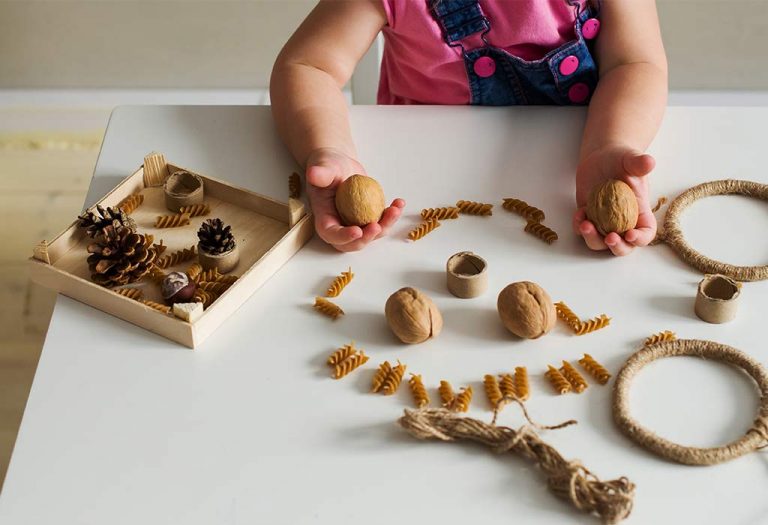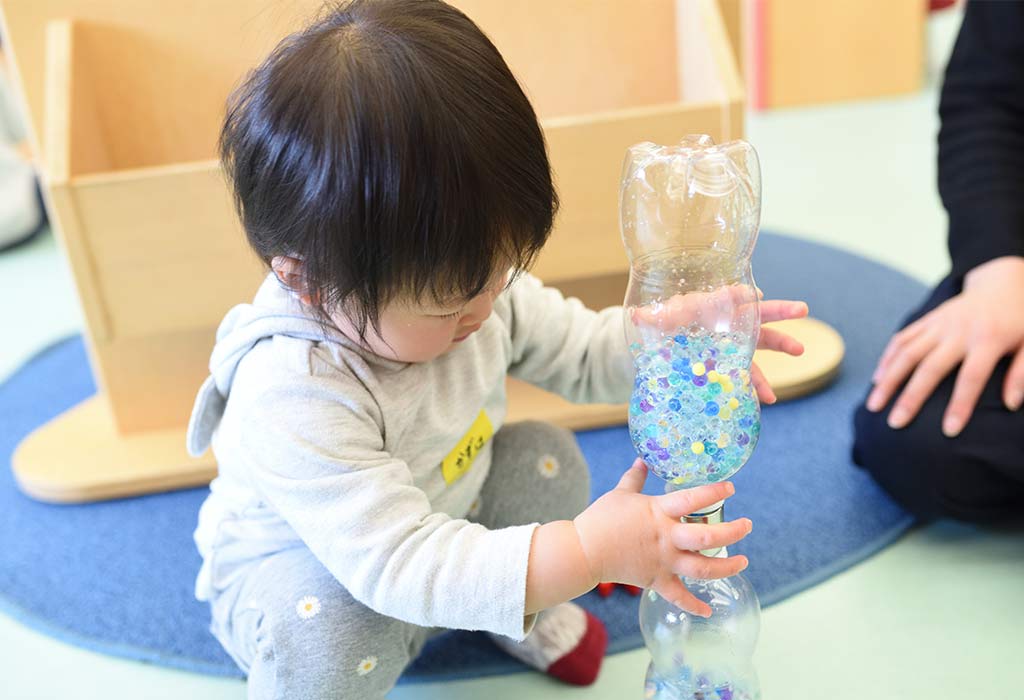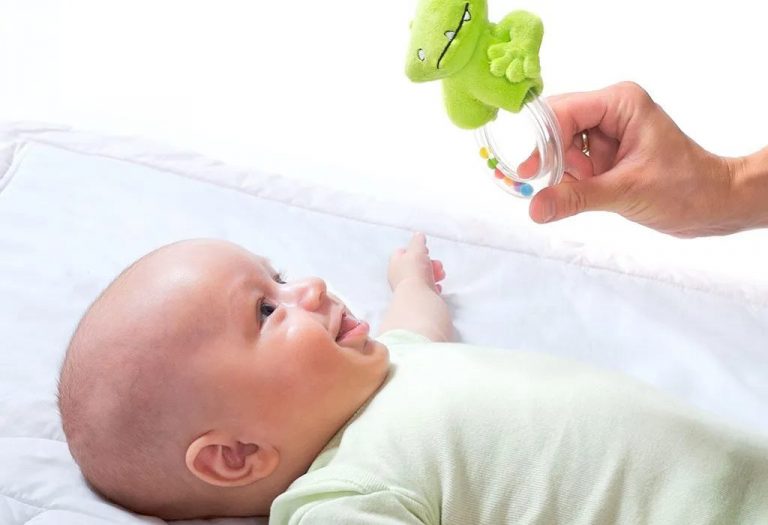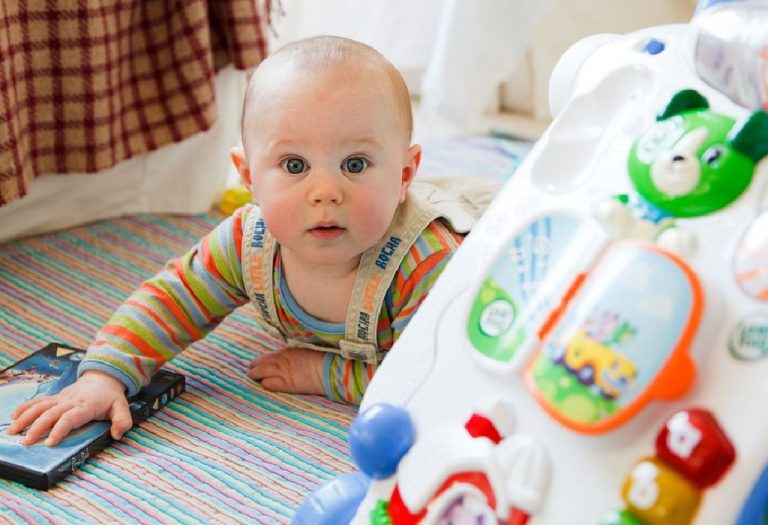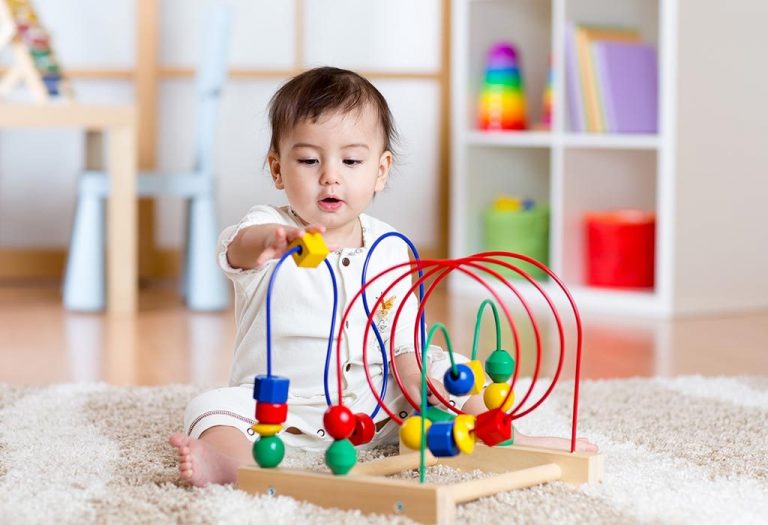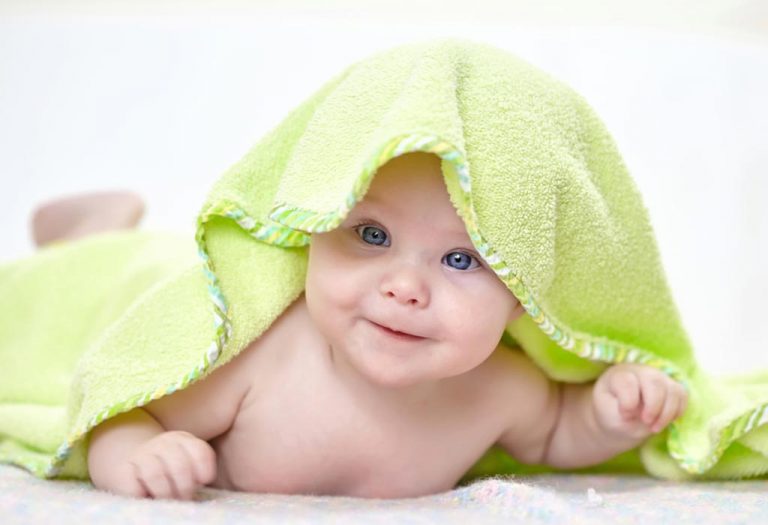30+ Best Sensory Activities For 1 Year Olds
Congratulations on reaching this exciting milestone of parenting—a curious and active one-year-old! Sensory activities are your go-to solution if you’re looking for ways to engage, stimulate, and entertain your little one. Keep reading to discover why these activities are beneficial and some fantastic ideas for trying them at home.
What Are Sensory Play Activities?
Sensory play activities are interactive tasks designed to engage a child’s senses—sight, touch, taste, smell, and hearing (4). They entertain and educate, laying the foundation for various cognitive and motor skills. From squishy mud pies to colourful sensory bottles, these activities open a world of joy and learning for your child.
Amazing Benefits of Sensory Activities for One Year Old Babies
Sensory activities are more than just a way to keep your one year old busy; they are essential for overall development. Here are some incredible benefits of incorporating sensory activities for 1 year olds into your child’s daily routine.
- Cognitive Development: Sensory activities boost cognitive growth by encouraging your child to explore various textures, colours, and sounds (1). They help improve memory, attention, and problem-solving skills, laying the groundwork for later academic success.
- Motor Skills Development: Fine and gross motor skills are honed when your one-year-old grasps, pinches, or stacks objects. Whether picking up water beads or squishing playdough, these activities provide ample opportunity to refine motor abilities (5).
- Enhanced Emotional Regulation: Sensory activities allow one year olds to experience a range of emotional responses in a controlled environment. They learn how to manage feelings of excitement, frustration, or joy, which contributes to better emotional regulation as they grow.
- Improved Social Skills: When engaging in sensory activities like group painting or sharing a sensory bin, your child learns essential social skills. These can include sharing, taking turns, and effective communication—skills beneficial in nursery and beyond.
- Increases Attention Span: The various sensory inputs maintain a child’s interest longer than other types of play, fostering an enhanced ability to concentrate. This can be particularly beneficial in preparing them for more structured learning environments in the future.
Sensory activities offer many invaluable benefits for one-year-olds, from emotional regulation to cognitive and motor skill development. Why not start incorporating some into your child’s daily routine?
Best Sensory Activity Ideas for Your 1 Year Old
As your child hits the one year mark, you’ll be amazed at how quickly they’re growing and learning. This is the perfect time to introduce sensory activities for 12 month old toddlers to boost their cognitive and physical development. Here’s a roundup of ten fabulous activities you can easily set up at home.
1. Texture Walk
Lay down different textured materials on the floor, such as bubble wrap, carpet, and tin foil. Let your little one walk or crawl over them to feel the various textures.
2. Colour Sorting
Use coloured balls and matching coloured containers for a simple sorting game. This helps recognise colours and hone fine motor skills.
3. Scented Playdough
Make your playdough with different scents using extracts like vanilla, lemon, or even spices like cinnamon. It’s a fun way for your 12 month old to explore different smells.
4. Animal Sounds Game
Create flashcards of different animals and make the corresponding sounds. This is an excellent activity for auditory discrimination.
5. Simple Musical Instruments
Gather household items like spoons, pots, and shakers to create simple musical instruments. Allow your child to explore different sounds.
6. Edible Sand
Crushed graham crackers or biscuits can be used to make edible sand. Provide cups and spoons for scooping and pouring for tactile fun.
7. Feather Touch
Let your child feel the soft sensation of feathers by gently brushing them on their arms, legs, and face. It’s an easy and soothing tactile experience.
8. Peek-a-Boo Fabric Box
Place different fabrics in a box and play peek-a-boo. Encourage your child to feel each fabric and discuss its texture, making it a multi-sensory activity.
9. Mirror Play
Set up a safe mirror at your child’s level. Make faces or play peek-a-boo, encouraging self-recognition and emotional development.
10. Water Pouring Station
Set up a small station with cups and bowls filled with water. Show your child how to pour water from one container to another. It’s a great way to develop coordination and enjoy water play.
So there you have it! Ten easy-to-set-up sensory activities for one year old toddlers that engage and contribute to their overall development.
Messy Play Sensory Activities for Your 1 Year Old
Embrace the mess and let your child dive into the wonders of sensory play! Messy play is a cornerstone of sensory exploration and provides endless opportunities for tactile experiences. Below are ten DIY sensory activities that are as easy to set up as they are fun to explore.
1. Finger Painting
Lay out some non-toxic paint and paper, and let your little one go to town with their fingers. This activity enhances creativity while being a sensory delight.
2. Oobleck Exploration
Create oobleck with just cornstarch and water for a fascinating lesson in fluid dynamics. This easy sensory activity is safe and fun to poke, stir, and walk on!
3. Cloud Dough
Mix flour and baby oil to make soft, moldable cloud dough. This dough is excellent for squishing and moulding and provides a wonderful tactile experience.
4. Spaghetti Worms
Cook spaghetti noodles and let them cool. Add a bit of food colouring, and you’ve got yourself some squishy worms for your child to play with.
5. Whipped Cream Play
Spread whipped cream on a plastic sheet. Let your child swirl, dab, and even taste this delightful treat.
6. Mud Play
Take some garden soil and water and have a natural mud pit. Perfect for digging, scooping, and generally getting messy.
7. Rice Sensory Bin
Coloured rice in a bin with scoops and small toys makes for hours of sensory fun. It’s an easy sensory activity that can be set up quickly.
8. Ice Cube Painting
Freeze coloured water in an ice tray and let your child paint with the melting cubes. It’s a beautiful mess that’s incredibly engaging.
9. Jelly Dig
Fill a small container with jelly and hide some small toys within. Your little one can dig them out and experience the jelly’s strange and compelling texture.
10. Scented Shaving Foam
Add food colouring and essential oils to shaving foam for a fragrant and colourful sensory experience.
Indulging in these DIY sensory activities with your child makes for engaging playtime and stimulates their sensory development in many ways. The best part is that these are easy sensory activities you can set up with everyday household items. So, why not roll up your sleeves and get messy?
Sensory Bottle Activities for One-Year-Olds
If you’re looking for mess-free options that still engage your little one’s senses, sensory bottles are the way to go. These fun sensory activities are perfect for tiny hands to shake, roll, and observe. Here are some ideas for sensory bottles specially designed for one year olds.
1. Glitter Swirl Bottle
Fill a bottle with water, add glitter, and add a drop of food colouring. Seal the bottle tightly, and let your child shake it to see the swirling glitter.
2. Ocean in a Bottle
Combine water and blue food colouring in a bottle, adding small sea creature toys or shells. Watch your child’s amazement as they hold the ocean in their hands.
3. Rainbow Rice Bottle
Take coloured rice and layer it in different colours in a clear bottle. When shaken, it’s a visual treat and a noisemaker, providing multi-sensory stimulation.
4. Nature Bottle
Collect twigs, leaves, and flowers to place in a bottle filled with water. This allows your child to explore natural textures and colours safely.
5. Pom-Pom Bottle
Fill a bottle with colourful pom-poms and tiny beads. Your child can roll or shake the bottle to move the pom-poms around, providing visual and auditory stimulation.
These sensory bottle activities are not just fun sensory activities; they are also incredibly versatile and educational. You’ll love watching your one-year-old explore, shake, and become fascinated with the world in a bottle!
Sensory Bag Activities for 1-Year-Olds
Sensory bags offer a squishy and safe way for little explorers to experience various textures and materials. These zip-lock wonders are perfect for tactile fun without the mess, providing an ideal sensory playground for your one-year-old.
1. Gel and Bead Sensory Bag
Fill a zip-lock bag with hair gel and add water beads or marbles. Seal the bag and tape it to a window or table. Your child will have a blast pushing the beads around through the gel.
2. Paint Swirl Sensory Bag
Put different non-toxic paint colours in a zip-lock bag and seal it tight. Your child can then squish the colours together, creating new shades and patterns without mess.
3. Alphabet Soup Sensory Bag
Fill a bag with water and add foam letters or numbers. Your little one can push the letters around in the water, making it a fun and educational sensory activity.
Sensory bags are fantastic for on-the-go or at-home play. They’re easy to make and easier to clean up, making them the perfect choice for busy parents and curious one-year-olds alike.
Water Sensory Activities for Your One-Year-Olds
Water activities are a splash hit with one-year-olds for a reason! They offer endless opportunities for sensory exploration and are perfect for hot summer days or indoor fun. Here’s a list of refreshing water-based sensory activities to get those little hands splashing and learning.
1. Floating Objects
Fill a tub with water and add various objects that float and sink. Let your child explore what stays on top and what goes under.
2. Ice Melting Experiment
Put small toys in an ice tray, fill it with water, and freeze. Let your child use warm water to melt the ice and free the toys.
3. Rubber Duck Race
Create a small water channel and let rubber ducks float down. Your child will love to watch and even try to race them.
4. Water Painting
Give your child a brush and a cup of water to “paint” on a sidewalk or fence. As the water dries, the painting will disappear, ready for another masterpiece.
5. Sponges and Buckets
Provide different-sized sponges and buckets. Show how to squeeze water out of the sponges into the buckets and transfer it back and forth.
6. Fish Netting
Add some small toy fish to a water tub and give your child a small net to catch them.
7. Water Bead Play
Non-toxic water beads provide a wonderful sensory experience. Add them to water and let your child scoop, pour, and feel them.
8. Soap Foam Bin
Whip up some soap foam and fill a bin. Add spoons and cups for endless scooping and moulding fun.
9. Rainy Day Drip
If it’s raining, set up a bucket to catch the rainwater. Your child will be fascinated by the dripping sound and the slowly filling bucket.
10. Waterfall Wall
Create a waterfall using a pegboard, funnels, and tubes. Your child can pour water at the top and watch it descend.
Water sensory activities are not only enjoyable but also offer a multitude of learning experiences for your one year old. So, roll up those sleeves and dive into some water-filled fun!
Tips to Follow While Doing Sensory Activities With Your 1-Year-Old
Sensory activities are a fantastic way to stimulate your child’s development, but it’s important to approach them correctly. Here are some tips to ensure a safe and enjoyable sensory play experience for your one-year-old.
1. Supervise at All Times
Constant supervision is crucial, especially for activities involving small objects or water. Never leave your child unattended during sensory playtime.
2. Test for Allergies
Before introducing a new material, especially food-based items like dough or edible paint, test for allergies by applying a small amount on your child’s skin.
3. Set Boundaries
Make sure to establish some ground rules to keep the play safe. For example, food used in sensory bins should not be eaten, and water activities should stay within a designated area.
4. Clean Up Safely
After messy play, ensure that the area is thoroughly cleaned to avoid any slipping hazards or ingestion of materials.
Following these tips will make sensory play a positive and enriching experience for you and your little one. Happy playing!
FAQs
1. When should you start sensory activities for your infant?
You can start as early as a few months, but tailor the activities to your child’s developmental stage.
2. What are some early indications of sensory issues?
Aversion to certain textures, extreme reactions to sounds, and difficulty with balance can be early indicators.
3. Are sensory issues a sign of autism?
While sensory issues can be a symptom of autism, they are not a definitive sign (3).
4. Can sensory issues lead to speech delay?
In some cases, sensory issues may contribute to speech delays, but they are not a direct cause (2).
Sensory play is more than just a fun pastime—it’s vital to your child’s development. Through various textures, sounds, and interactive experiences, your one-year-old learns about their world and their place within it. There are endless ways to engage your child’s senses, from messy play to water activities and from sensory bags to sensory bottles. As a parent, embracing these moments provides your child with valuable learning experiences and allows you to bond and create cherished memories. So roll up your sleeves, prepare to get a little messy, and most importantly, have fun exploring the world of sensory activities with your little one. Happy playing!
References/Resources:
1. BENEFITS OF SENSORY PLAY IN EARLY YEARS; Jasper Place Family Resource Centre; https://jasperplace-cfrc.com/benefits/
2. Tung. L. C, Lin. C. K, Hsieh. C.L, et al.; Sensory integration dysfunction affects efficacy of speech therapy on children with functional articulation disorders; Neuropsychiatric Disease and Treatment; https://www.ncbi.nlm.nih.gov/pmc/articles/PMC3552545/#:~:text=When%20a%20child%20has%20defects,speech%20development%20and%20articulation%20disorders.; January 2013
3. McCormick. C, Hepburn. S, Young. G. S, Rogers. S. J; Sensory symptoms in children with autism spectrum disorder, other developmental disorders and typical development: A longitudinal study; PubMed Central; https://www.ncbi.nlm.nih.gov/pmc/articles/PMC4918912/; September 2015
4. Top 5 Benefits of Sensory Play; Jersey Shore Learning Center; https://jerseyshorelearningcenter.com/2019/09/30/top-5-benefits-of-sensory-play/
5. THE BENEFITS OF SENSORY PLAY; ST MARY’S NURSERY SCHOOL; https://www.stmarysnurseryschool.org.uk/blog/2021/3/15/the-benefits-of-sensory-play
Also Read:
Activities for a 1-Year-Old
Five Senses Activities for Children
Was This Article Helpful?
Parenting is a huge responsibility, for you as a caregiver, but also for us as a parenting content platform. We understand that and take our responsibility of creating credible content seriously. FirstCry Parenting articles are written and published only after extensive research using factually sound references to deliver quality content that is accurate, validated by experts, and completely reliable. To understand how we go about creating content that is credible, read our editorial policy here.





